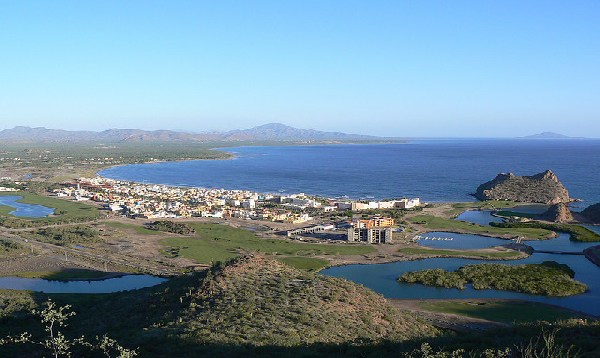In 2003, Canadian developers partnered with the Mexican government to embark on a $3 billion project, aiming to build a series of eco-friendly villages along the seaside of Loreto Bay, Mexico.
But the plan to create North America’s largest sustainable urban development has suffered road bumps over the past 10 years – largely a result of America’s 2008 economic crisis. Recession bankrupted the project’s initial developers, while the housing crisis drained bank accounts and enthusiasm about investing in new real estate.
In 2003, former president of Canada’s Trust for Sustainable Development, David Butterfield, struck a deal with Mexico’s trust fund for tourism, Fonatur, to found The Loreto Bay Company. Backed by funding giant Citigroup Property Investors, the company aimed to convert a 3200-acre property on the Sea of Cortez into 6,000 sustainable residences. Building an environmentally friendly commercial district to support the new inhabitants – mostly Canadian and American retirees — was also part of the plan.
To foster local recreational and medical facilities, Butterfield created The Loreto Bay Foundation in 2004, to which he donated 1 percent of the Loreto Bay Company’s gross home sales. In partnership with Canadian architect Ayrie Cunliffe, The Loreto Bay Company hoped to incorporate a seawater desalination plant and a 500-acre wind farm. These major infrastructure projects were put on the back-burner after recession hit and still have yet to be approved. But local residences and businesses — such as a golf course that uses greywater for irrigation — have taken sustainable living into their own hands.
Most of the homes are insulated with Perform Wall, a recycled mixture of concrete and Styrofoam that saves an estimated 7.2 tons of carbon dioxide emissions per home. Many also feature solar-powered gas and water heaters. But not all residences were created to be equally environmentally responsible — raising questions about how sustainable the development truly is as a whole.
 |
Despite its shortfalls, developers have strived to ensure that Loreto Bay has healthy environmental and economic impacts on Mexico. Most homes lack garages and other motor vehicle accommodations because residential and commercial areas are connected via gardens and walkways. The construction process has provided work for a few thousand local workers over the years – not to mention permanent jobs as a result of this new community.
After about four years of construction, the dream of creating an environmentally healthy community seemed to be off to a good start. But when recession hit in 2008, it hit hard. The Loreto Bay Company stopped construction in 2009 after filing for bankruptcy, and with it fizzled Butterfield’s Loreto Bay Foundation. At the time, fewer than 800 of the planned 6,000 units had sold, showing that buyers were increasingly apprehensive about investing in real estate.
After a few months in limbo, initial investors and early bird Loreto Bay homebuyers could finally breathe again when Homex, Mexico’s largest home developer, began to resume construction. Because Homex has no history of specializing in sustainability, some fear that the original plan’s emphasis on environmental-consciousness could be compromised.
Still, the general sentiment among residents is one of relief, now that construction is once again in progress. By 2011, just one year after Homex’s intervention, Loreto was ranked number 8 on the NYT’s “Where To Go” list. Two years down the road, inhabitant Paula Pennell feels confident that Loreto’s future will be less eventful than its rocky start: "We started with a dream [buying] back in October 2007, and now we’re embarking on a new beginning — one we hope will be mellower than the rollercoaster ride we’ve been on the past two and a half years."
While just three years ago project developers couldn’t even finish the initial plan, they’re now expanding the vision. The Villa del Palmar Beach Resort, refurbished Inn at Loreto Bay, and new condominium communities have all sprouted up over the past three years. Homes are selling at healthy prices again too, as single-family residences in Loreto’s various villages range from around $160,000 to almost $1 million currently.
But with the arrival of more tourist attractions and accommodations that don’t necessarily champion sustainability, is the Loreto Bay Company’s dream still attainable? Critics argue that this community can’t grow from a population of around 15,000 to an estimated 100,000 within a twenty-year period, without compromising its environmental focus. While low flow fixtures, rainfall collection, and solar panels help to conserve water and energy, the desalination plant and wind farm that were part of the original plan are the kinds of large-scale facilities that would make this community truly stand out as a worldwide front-runner in sustainability.
Can a garage-free development attract enough residents to grow into a thriving civilized community? Will the large quantity of new construction in an area that has already undergone struggles in its short history sell? These answers about the future of the Villages at Loreto Bay remain to be seen.


